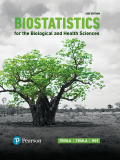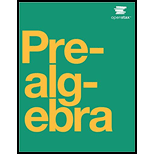
EBK BIOSTATISTICS FOR THE BIOLOGICAL AN
2nd Edition
ISBN: 9780134679228
Author: ROY
Publisher: PEARSON CUSTOM PUB.(CONSIGNMENT)
expand_more
expand_more
format_list_bulleted
Concept explainers
Question
Chapter 3.1, Problem 1SLCT
To determine
To define; the role of average in statistics and to determine whether another term should be used in place of average
Expert Solution & Answer
Want to see the full answer?
Check out a sample textbook solution
Students have asked these similar questions
NC Current Students - North Ce X | NC Canvas Login Links - North ( X
Final Exam Comprehensive x Cengage Learning
x
WASTAT - Final Exam - STAT
→
C
webassign.net/web/Student/Assignment-Responses/submit?dep=36055360&tags=autosave#question3659890_9
Part (b)
Draw a scatter plot of the ordered pairs.
N
Life
Expectancy
Life
Expectancy
80
70
600
50
40
30
20
10
Year of
1950
1970 1990
2010 Birth
O
Life
Expectancy
Part (c)
800
70
60
50
40
30
20
10
1950
1970 1990
W
ALT
林
$
#
4
R
J7
Year of
2010 Birth
F6
4+
80
70
60
50
40
30
20
10
Year of
1950 1970 1990
2010 Birth
Life
Expectancy
Ox
800
70
60
50
40
30
20
10
Year of
1950 1970 1990 2010 Birth
hp
P.B.
KA
&
7
80
% 5
H
A
B
F10
711
N
M
K
744
PRT SC
ALT
CTRL
Harvard University
California Institute of Technology
Massachusetts Institute of Technology
Stanford University
Princeton University
University of Cambridge
University of Oxford
University of California, Berkeley
Imperial College London
Yale University
University of California, Los Angeles
University of Chicago
Johns Hopkins University
Cornell University
ETH Zurich
University of Michigan
University of Toronto
Columbia University
University of Pennsylvania
Carnegie Mellon University
University of Hong Kong
University College London
University of Washington
Duke University
Northwestern University
University of Tokyo
Georgia Institute of Technology
Pohang University of Science and Technology
University of California, Santa Barbara
University of British Columbia
University of North Carolina at Chapel Hill
University of California, San Diego
University of Illinois at Urbana-Champaign
National University of Singapore
McGill…
Name
Harvard University
California Institute of Technology
Massachusetts Institute of Technology
Stanford University
Princeton University
University of Cambridge
University of Oxford
University of California, Berkeley
Imperial College London
Yale University
University of California, Los Angeles
University of Chicago
Johns Hopkins University
Cornell University
ETH Zurich
University of Michigan
University of Toronto
Columbia University
University of Pennsylvania
Carnegie Mellon University
University of Hong Kong
University College London
University of Washington
Duke University
Northwestern University
University of Tokyo
Georgia Institute of Technology
Pohang University of Science and Technology
University of California, Santa Barbara
University of British Columbia
University of North Carolina at Chapel Hill
University of California, San Diego
University of Illinois at Urbana-Champaign
National University of Singapore…
Chapter 3 Solutions
EBK BIOSTATISTICS FOR THE BIOLOGICAL AN
Ch. 3.1 - Prob. 1SLCTCh. 3.1 - Prob. 2SLCTCh. 3.1 - Prob. 3SLCTCh. 3.1 - Prob. 4SLCTCh. 3.1 - Prob. 5SLCTCh. 3.1 - Prob. 6SLCTCh. 3.1 - Prob. 7SLCTCh. 3.1 - Prob. 8SLCTCh. 3.1 - Prob. 9SLCTCh. 3.1 - Prob. 10SLCT
Ch. 3.1 - Prob. 11SLCTCh. 3.1 - Prob. 12SLCTCh. 3.1 - Prob. 13SLCTCh. 3.1 - Prob. 14SLCTCh. 3.1 - Prob. 15SLCTCh. 3.1 - Prob. 16SLCTCh. 3.1 - Prob. 17SLCTCh. 3.1 - Prob. 18SLCTCh. 3.1 - Prob. 19SLCTCh. 3.1 - Prob. 20SLCTCh. 3.1 - Prob. 21SLCTCh. 3.1 - Prob. 22SLCTCh. 3.1 - Prob. 23SLCTCh. 3.1 - Prob. 24SLCTCh. 3.1 - Prob. 25SLCTCh. 3.1 - Prob. 26SLCTCh. 3.1 - Prob. 27SLCTCh. 3.1 - Prob. 28SLCTCh. 3.1 - Prob. 29SLCTCh. 3.1 - Prob. 30SLCTCh. 3.1 - Prob. 31SLCTCh. 3.2 - Prob. 1SLCTCh. 3.2 - Prob. 2SLCTCh. 3.2 - Prob. 3SLCTCh. 3.2 - Prob. 4SLCTCh. 3.2 - Prob. 5SLCTCh. 3.2 - Prob. 6SLCTCh. 3.2 - Prob. 7SLCTCh. 3.2 - Prob. 8SLCTCh. 3.2 - Prob. 9SLCTCh. 3.2 - Prob. 10SLCTCh. 3.2 - Prob. 11SLCTCh. 3.2 - Prob. 12SLCTCh. 3.2 - Prob. 13SLCTCh. 3.2 - Prob. 14SLCTCh. 3.2 - Prob. 15SLCTCh. 3.2 - Prob. 16SLCTCh. 3.2 - Prob. 17SLCTCh. 3.2 - Prob. 18SLCTCh. 3.2 - Prob. 19SLCTCh. 3.2 - Prob. 20SLCTCh. 3.2 - Prob. 21SLCTCh. 3.2 - Prob. 22SLCTCh. 3.2 - Prob. 23SLCTCh. 3.2 - Prob. 24SLCTCh. 3.2 - Prob. 25SLCTCh. 3.2 - Prob. 26SLCTCh. 3.2 - Prob. 27SLCTCh. 3.2 - Prob. 28SLCTCh. 3.2 - Prob. 29SLCTCh. 3.2 - Prob. 30SLCTCh. 3.2 - Prob. 31SLCTCh. 3.2 - Prob. 32SLCTCh. 3.2 - Prob. 33SLCTCh. 3.2 - Prob. 34SLCTCh. 3.2 - Prob. 35SLCTCh. 3.2 - Prob. 36SLCTCh. 3.3 - Prob. 1SLCTCh. 3.3 - Prob. 2SLCTCh. 3.3 - Prob. 3SLCTCh. 3.3 - Prob. 4SLCTCh. 3.3 - Prob. 5SLCTCh. 3.3 - Prob. 6SLCTCh. 3.3 - Prob. 7SLCTCh. 3.3 - Prob. 8SLCTCh. 3.3 - Prob. 9SLCTCh. 3.3 - Prob. 10SLCTCh. 3.3 - Prob. 11SLCTCh. 3.3 - Prob. 12SLCTCh. 3.3 - Prob. 13SLCTCh. 3.3 - Prob. 14SLCTCh. 3.3 - Prob. 15SLCTCh. 3.3 - Prob. 16SLCTCh. 3.3 - Prob. 17SLCTCh. 3.3 - Prob. 18SLCTCh. 3.3 - Prob. 19SLCTCh. 3.3 - Prob. 20SLCTCh. 3.3 - Prob. 21SLCTCh. 3.3 - Prob. 22SLCTCh. 3.3 - Prob. 23SLCTCh. 3.3 - Prob. 24SLCTCh. 3.3 - Prob. 25SLCTCh. 3.3 - Prob. 26SLCTCh. 3.3 - Prob. 27SLCTCh. 3.3 - Prob. 28SLCTCh. 3.3 - Prob. 29SLCTCh. 3.3 - Prob. 30SLCTCh. 3.3 - Prob. 31SLCTCh. 3.3 - Prob. 32SLCTCh. 3.3 - Prob. 33SLCTCh. 3.3 - Prob. 34SLCTCh. 3.3 - Prob. 35SLCTCh. 3 - Prob. 1CQQCh. 3 - Prob. 2CQQCh. 3 - Prob. 3CQQCh. 3 - Prob. 4CQQCh. 3 - Prob. 5CQQCh. 3 - Prob. 6CQQCh. 3 - Prob. 7CQQCh. 3 - Prob. 8CQQCh. 3 - Prob. 9CQQCh. 3 - Prob. 10CQQCh. 3 - Prob. 1RECh. 3 - Prob. 2RECh. 3 - Prob. 3RECh. 3 - Prob. 4RECh. 3 - Prob. 5RECh. 3 - Prob. 6RECh. 3 - Prob. 7RECh. 3 - Prob. 8RECh. 3 - Prob. 1CRECh. 3 - Prob. 2CRECh. 3 - Prob. 3CRECh. 3 - Prob. 4CRECh. 3 - Prob. 5CRE
Knowledge Booster
Learn more about
Need a deep-dive on the concept behind this application? Look no further. Learn more about this topic, statistics and related others by exploring similar questions and additional content below.Similar questions
- A company found that the daily sales revenue of its flagship product follows a normal distribution with a mean of $4500 and a standard deviation of $450. The company defines a "high-sales day" that is, any day with sales exceeding $4800. please provide a step by step on how to get the answers in excel Q: What percentage of days can the company expect to have "high-sales days" or sales greater than $4800? Q: What is the sales revenue threshold for the bottom 10% of days? (please note that 10% refers to the probability/area under bell curve towards the lower tail of bell curve) Provide answers in the yellow cellsarrow_forwardFind the critical value for a left-tailed test using the F distribution with a 0.025, degrees of freedom in the numerator=12, and degrees of freedom in the denominator = 50. A portion of the table of critical values of the F-distribution is provided. Click the icon to view the partial table of critical values of the F-distribution. What is the critical value? (Round to two decimal places as needed.)arrow_forwardA retail store manager claims that the average daily sales of the store are $1,500. You aim to test whether the actual average daily sales differ significantly from this claimed value. You can provide your answer by inserting a text box and the answer must include: Null hypothesis, Alternative hypothesis, Show answer (output table/summary table), and Conclusion based on the P value. Showing the calculation is a must. If calculation is missing,so please provide a step by step on the answers Numerical answers in the yellow cellsarrow_forward
arrow_back_ios
SEE MORE QUESTIONS
arrow_forward_ios
Recommended textbooks for you
 Holt Mcdougal Larson Pre-algebra: Student Edition...AlgebraISBN:9780547587776Author:HOLT MCDOUGALPublisher:HOLT MCDOUGAL
Holt Mcdougal Larson Pre-algebra: Student Edition...AlgebraISBN:9780547587776Author:HOLT MCDOUGALPublisher:HOLT MCDOUGAL Glencoe Algebra 1, Student Edition, 9780079039897...AlgebraISBN:9780079039897Author:CarterPublisher:McGraw Hill
Glencoe Algebra 1, Student Edition, 9780079039897...AlgebraISBN:9780079039897Author:CarterPublisher:McGraw Hill
 Big Ideas Math A Bridge To Success Algebra 1: Stu...AlgebraISBN:9781680331141Author:HOUGHTON MIFFLIN HARCOURTPublisher:Houghton Mifflin Harcourt
Big Ideas Math A Bridge To Success Algebra 1: Stu...AlgebraISBN:9781680331141Author:HOUGHTON MIFFLIN HARCOURTPublisher:Houghton Mifflin Harcourt

Holt Mcdougal Larson Pre-algebra: Student Edition...
Algebra
ISBN:9780547587776
Author:HOLT MCDOUGAL
Publisher:HOLT MCDOUGAL

Glencoe Algebra 1, Student Edition, 9780079039897...
Algebra
ISBN:9780079039897
Author:Carter
Publisher:McGraw Hill


Big Ideas Math A Bridge To Success Algebra 1: Stu...
Algebra
ISBN:9781680331141
Author:HOUGHTON MIFFLIN HARCOURT
Publisher:Houghton Mifflin Harcourt
Propositional Logic, Propositional Variables & Compound Propositions; Author: Neso Academy;https://www.youtube.com/watch?v=Ib5njCwNMdk;License: Standard YouTube License, CC-BY
Propositional Logic - Discrete math; Author: Charles Edeki - Math Computer Science Programming;https://www.youtube.com/watch?v=rL_8y2v1Guw;License: Standard YouTube License, CC-BY
DM-12-Propositional Logic-Basics; Author: GATEBOOK VIDEO LECTURES;https://www.youtube.com/watch?v=pzUBrJLIESU;License: Standard Youtube License
Lecture 1 - Propositional Logic; Author: nptelhrd;https://www.youtube.com/watch?v=xlUFkMKSB3Y;License: Standard YouTube License, CC-BY
MFCS unit-1 || Part:1 || JNTU || Well formed formula || propositional calculus || truth tables; Author: Learn with Smily;https://www.youtube.com/watch?v=XV15Q4mCcHc;License: Standard YouTube License, CC-BY